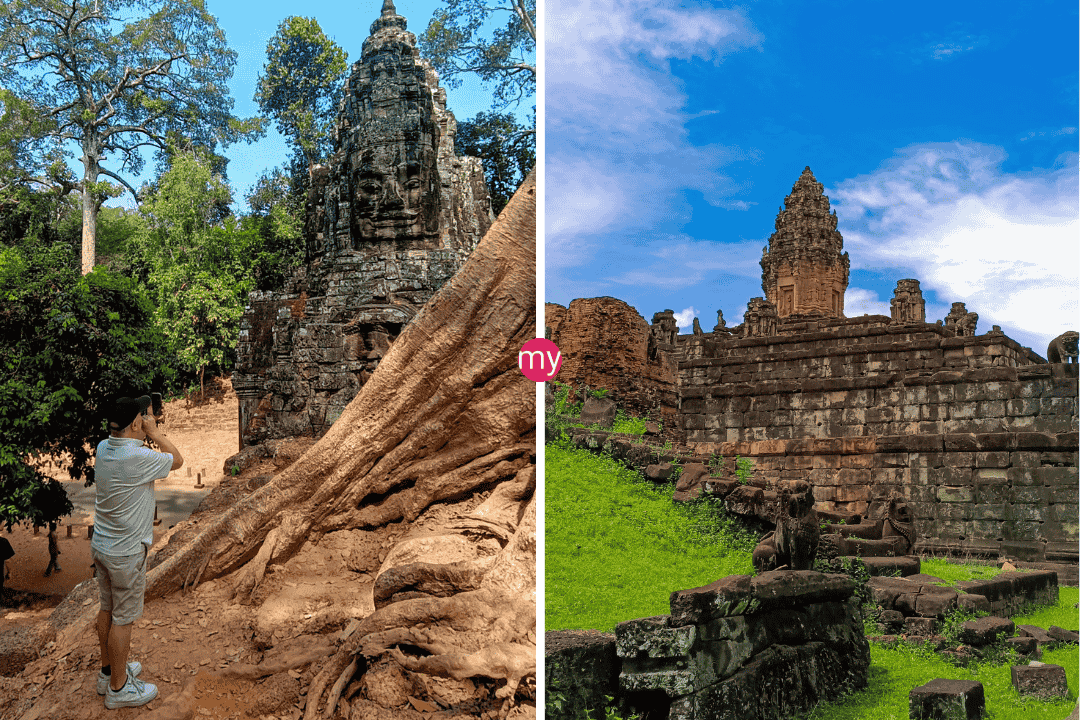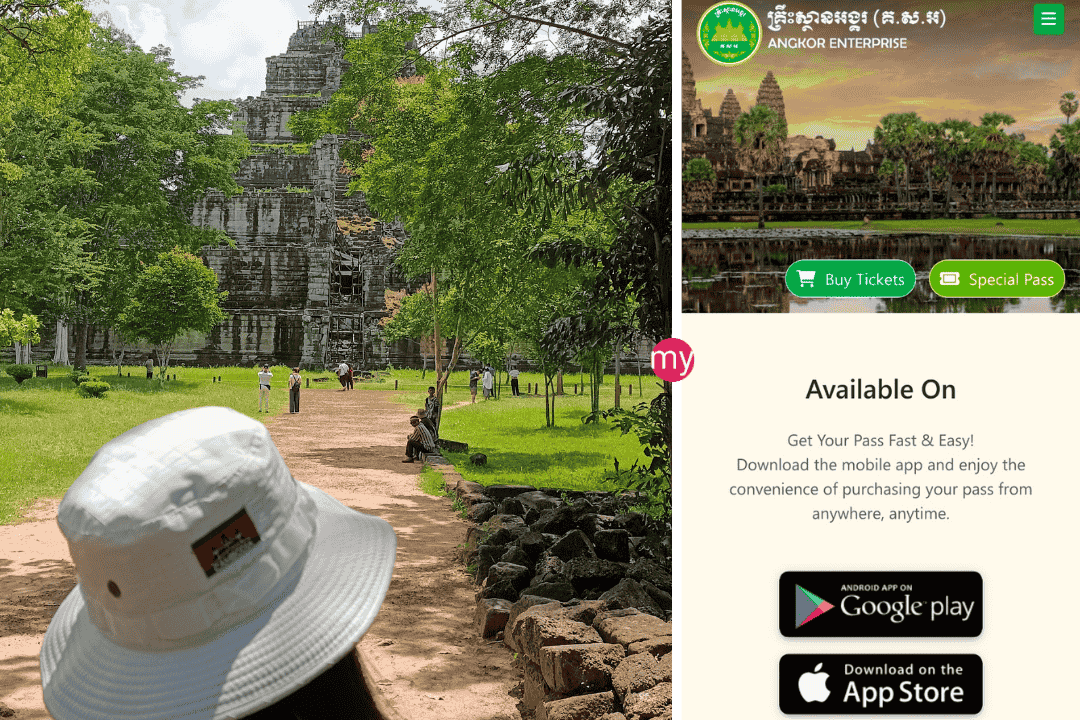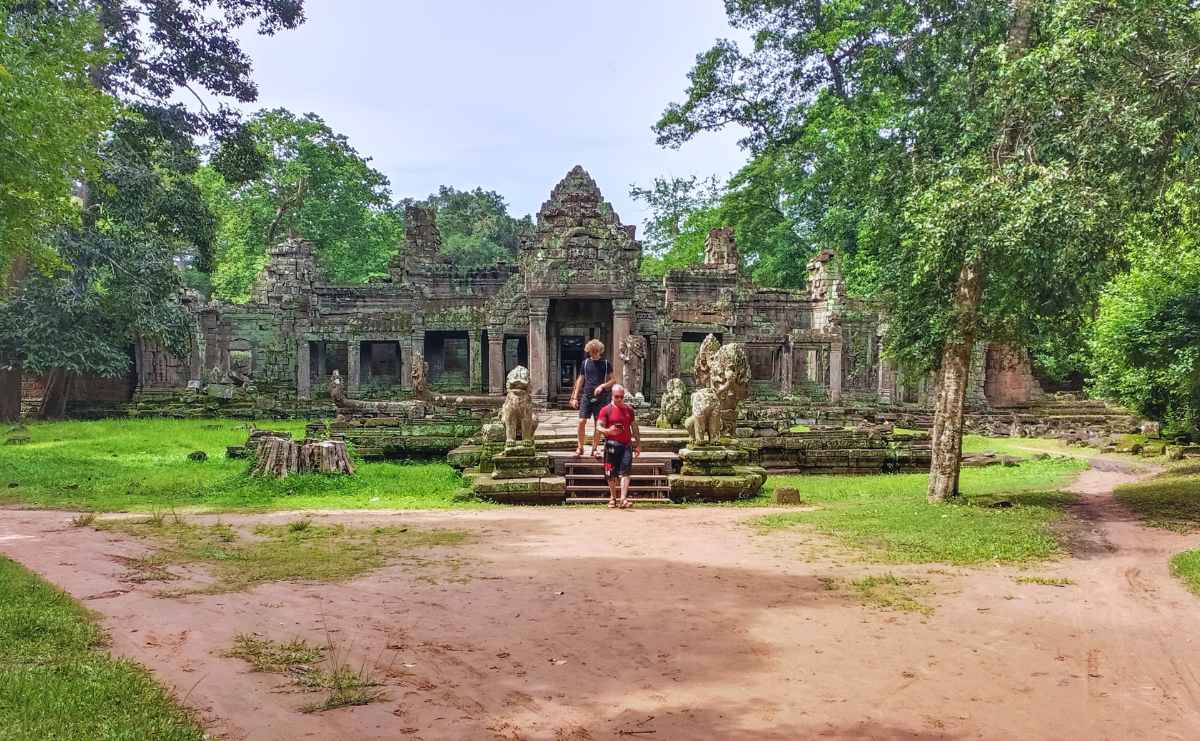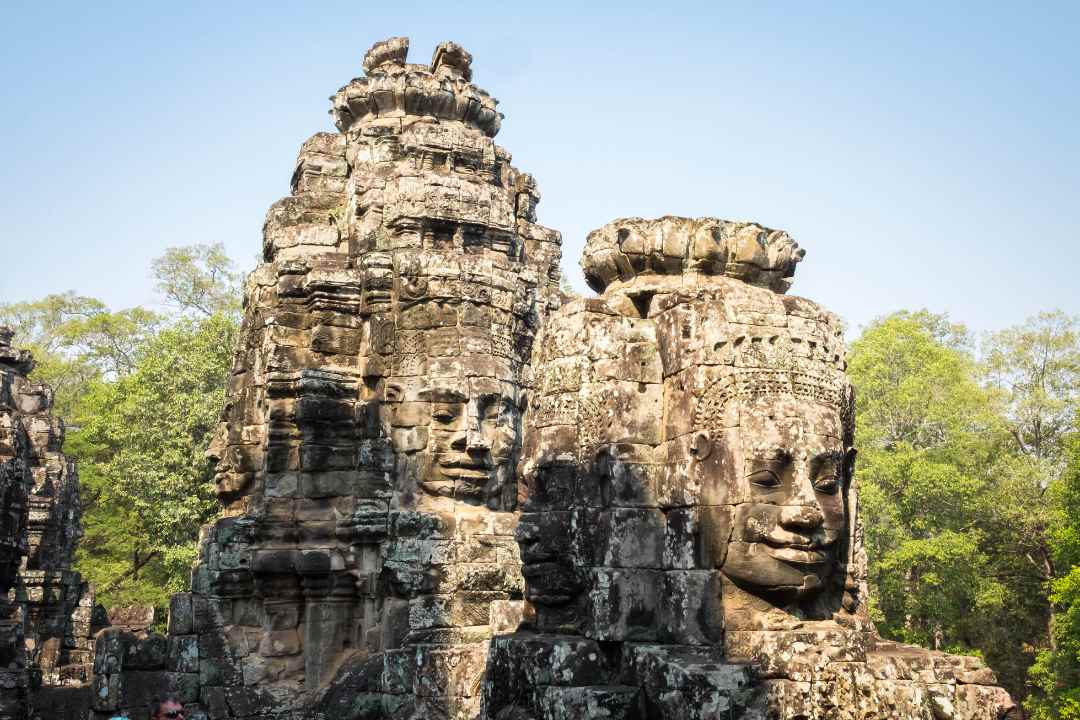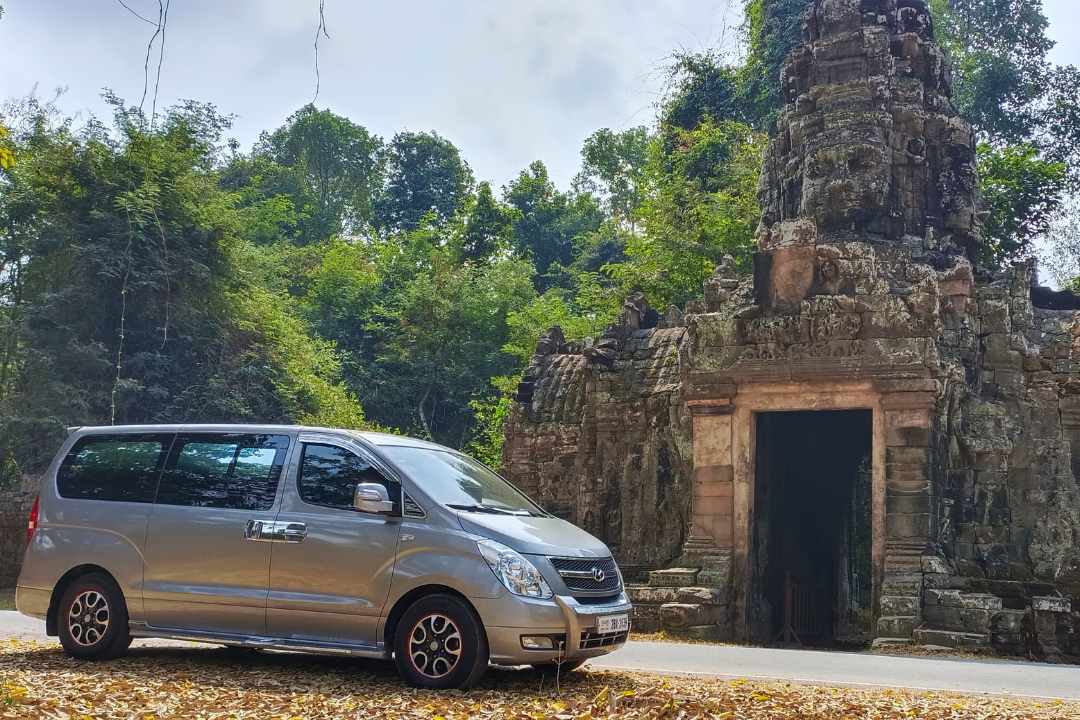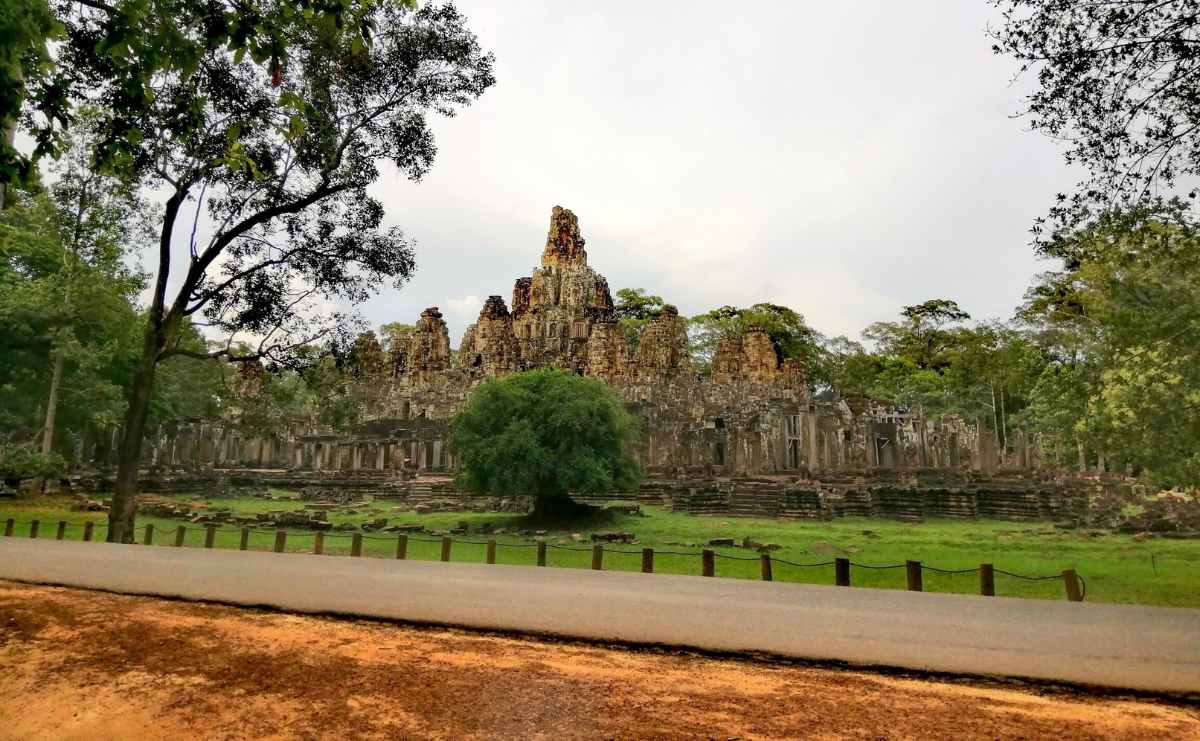Roar of the Stone Kings - Cambodia's Amazing Ancient Lion Statues
Uncover the secrets of temple guardians that stood watch for over 1,000 years!
Ever wondered what it’d be like to come face-to-face with a stone lion that’s older than your great-great-great-grandparents?
Well, get ready to travel back in time to ancient Cambodia, where stone lions ruled alongside kings and protected mighty temples!
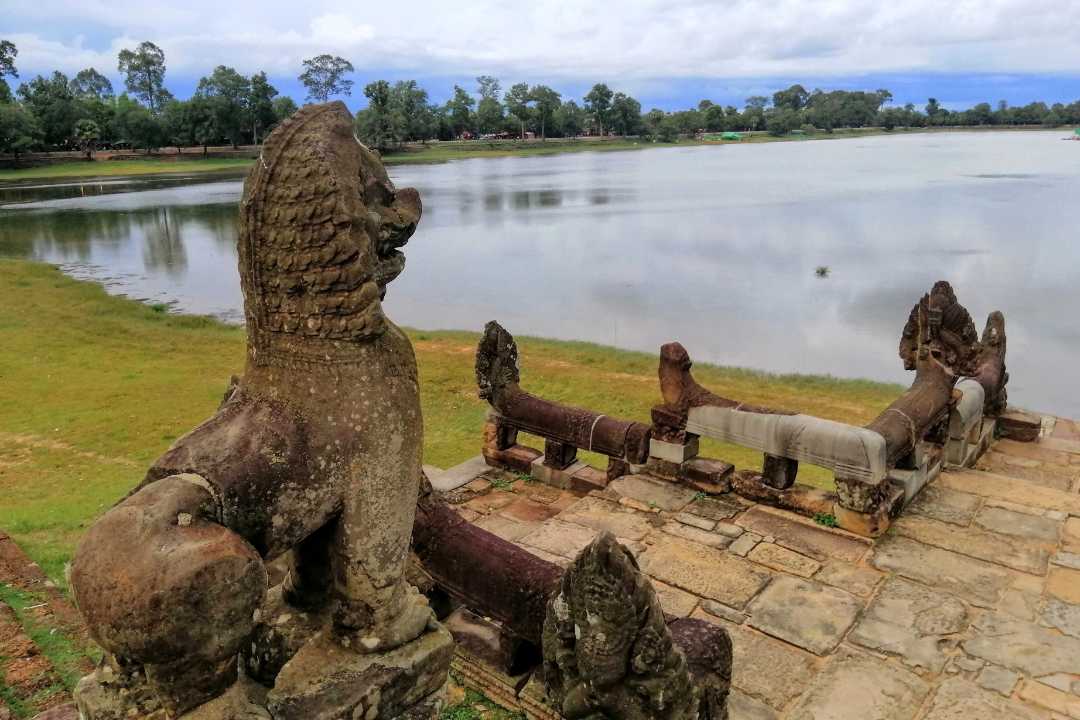
Imagine standing in front of a huge temple, and there they are – massive stone lions with fierce faces, guarding the entrance.
These aren’t just any old statues.
They’re the guardians of the Ancient Khmer Empire, and they’ve got some wild stories to tell!
Did you know that these lions have seen empires rise and fall?
Or that they’ve outlasted wars, weather, and even the jungle itself?
It’s true! Some of these stone cats are older than most countries.
Now that’s what I call staying power!
But here’s the kicker – there weren’t even real lions in Cambodia! So why did the ancient Khmer people carve so many?
Buckle up, because we’re about to uncover the mystery of the Lions of the Ancient Khmer Empire!
Top 5 Roar-some Facts About the Lions of the Ancient Khmer Empire:
- Guardian Lions: These stone big cats weren’t just for show. The Khmer people believed lions could scare away evil spirits. It’s like having a supernatural bouncer for your temple!
- Royal Symbols: Khmer kings used lion statues to show off their power. It’s like saying, “I’m as strong as a lion!” without actually having to wrestle one.
- Artistic Evolution: The style of Khmer lions changed over time. Early ones were simple and blocky, but later lions got super detailed. It’s like watching lion fashion change over 600 years!
- Religious Rock Stars: Lions pop up in lots of Hindu and Buddhist stories. Using lion statues was a way for the Khmer to show off their faith and connect with the gods.
- Mythical Mash-ups: Some Khmer artists created wild lion hybrids, like the half-lion, half-elephant Gajasimha. It’s the ancient version of Pokémon fusion!
Editor’s Note: This article was last updated on September 27, 2024, by our team of local Cambodian history experts. We’re always on the prowl for the latest info about Angkor’s stone lions!
The Birth of the Stone Kings
Let’s kick things off with a mind-blowing fact: the oldest Khmer lions are older than the famous Angkor Wat temple! That’s right, these stone cats have been around the block a few times.
The story of the Lions of the Ancient Khmer Empire starts way back in the 7th century. That’s over 1,300 years ago! The first known lion statues showed up at a place called Prasat Tao in Sambor Prei Kuk. These early lions were pretty simple – kind of like stone block figures with manes.
But why lions? Well, here’s the thing: there weren’t any real lions prowling around Cambodia. The Khmer people got the idea from India, along with a bunch of other cool stuff like Hindu gods and yummy spices. They thought, “Hey, these lion guys look pretty tough. Let’s use them to guard our temples!”
Lion Look-Book: Styles Through the Ages
Now, you might think one stone lion looks pretty much like another. But hold onto your hats, because Khmer lions went through more style changes than a pop star!
Let’s break it down:
- 7th Century Lions: These were the OGs (Original Guardians). Simple and blocky, but they got the job done.
- 9th-10th Century Lions: Lions hit their growth spurt! They got bigger and more detailed. Artists started adding curly manes and fierce expressions.
- 12th-13th Century Lions: This was peak lion fashion. Super detailed, with bulging muscles and sometimes even fangs showing. Some even mixed lion features with other animals, creating mythical mash-ups.
Check out this lion evolution chart:
| Time Period | Lion Style | Where to See Them |
|---|---|---|
| 7th Century | Simple, blocky | Prasat Tao, Sambor Prei Kuk |
| 9th-10th Century | Bigger, more detailed | Bakong Temple, Preah Ko |
| 12th-13th Century | Super detailed, some hybrids | Angkor Wat, Bayon Temple |
Want to see these different lion styles for yourself? Our One-Day Angkor Small Circuit Tour lets you spot lions from different eras all in one day!
Lion Locations: Where to Spot These Stone Cats
Okay, so you’re pumped to see some Khmer lions. But where should you look? Don’t worry, I’ve got you covered with this handy lion-spotting guide:
- Angkor Wat: The granddaddy of all temples. Lions guard the entrance like ancient security guards.
- Bayon Temple: Home to lions with attitude! Some stare straight ahead, others give you the side-eye as you walk in. Spooky!
- Phnom Bakheng: If lions had a beauty pageant, these ones would win. They’re known as the prettiest lions in town.
- Royal Terraces of Angkor Thom: It’s like a lion fashion show here, with different styles all in one place.
- Srah Srang: This old royal bath has two lions keeping an eye on the steps. They’ve been lifeguards for centuries!
Want to see a bunch of these spots in one go? Check out our Angkor Wat and Angkor Thom Tour. It’s like a greatest hits of Khmer lions!
Stone Lions with Superpowers: Mythical Mash-ups
Hold onto your socks, because this is where things get really wild. The Khmer artists weren’t content with just regular old lions. Nope, they decided to create some seriously cool lion hybrids. It’s like they were playing a game of “what if” with stone and chisels!
Here are some of the craziest Khmer lion mash-ups:
- Gajasimha: Part lion, part elephant. Imagine a lion’s head on an elephant’s body. It’s like the ancient version of a fantasy football team mascot!
- Narasimha: Half lion, half human. This guy was actually a form of the Hindu god Vishnu. Talk about a powerful protector!
- Lion-faced guardian: These statues had human bodies but lion heads. They’re like the ancient Khmer version of superheroes.
You can spot some of these wild creatures on our Angkor Photo Tour. Just imagine the Instagram likes you’ll get with those pics!
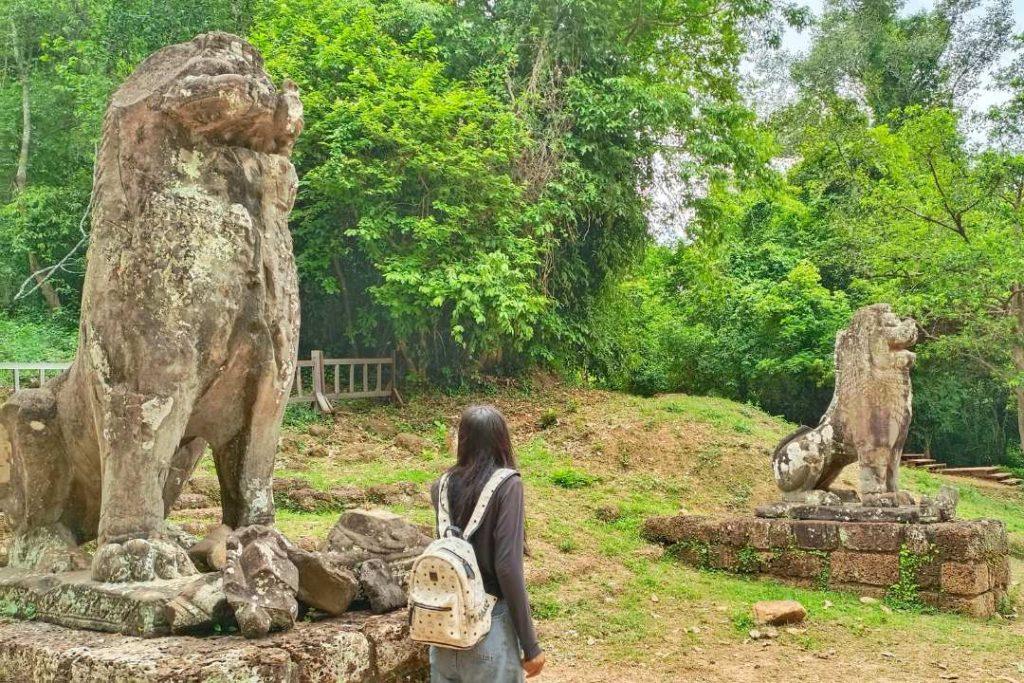
The Lion King – Royal Symbols and Power Plays
Alright, time to talk about why these Lions of the Ancient Khmer Empire were such a big deal to the kings. Spoiler alert: it wasn’t just because they looked cool (though that was definitely part of it).
Here’s the scoop:
- Strength Symbol: Lions are strong, right? Well, Khmer kings wanted everyone to know they were strong too. By using lion statues, they were basically saying, “I’m as tough as this big cat!”
- Divine Connection: In Hindu stories, some gods were associated with lions. By using lion symbols, kings were hinting that they had a special connection to the divine. Pretty slick, huh?
- Guardian Vibes: Remember how people thought lions could scare away evil spirits? Kings used this idea to show they could protect their people, just like the lions protected the temples.
- Artistic Flex: Creating huge, detailed lion statues was a way for kings to show off their wealth and the skill of their artists. It’s like saying, “Look what I can build!”
So next time you see a Khmer lion statue, remember: it’s not just a pretty face. It’s a 1,000-year-old propaganda poster!
Back in the early 1900s, when Cambodia was under French rule, people started to realize how important these old temples and statues were. They began to clear away the jungle that had grown over everything and fix up the broken parts.
Today, teams of experts are still working to keep these lions and temples in good shape. It’s not easy work – imagine trying to fix a 1,000-year-old stone puzzle! But thanks to their efforts, we can still see these amazing lions today.
At Phnom Bakheng, for example, they’ve fixed up 5 out of 12 lion statues so far. It’s slow work, but every restored lion is like bringing a piece of history back to life!
What Can We Learn?
Now, you might be thinking, “Okay, these lions are cool and all, but why should I care?” Great question! These stone cats have a lot to teach us:
- Creativity Rules: The Khmer people took an animal they’d never seen and made it their own. It shows how imagination can turn foreign ideas into something uniquely awesome.
- Symbols Matter: Just like we use emojis to express big ideas quickly, the Khmer used lions to send messages about power and protection. It’s like ancient texting!
- Art Lasts: These statues have survived for over 1,000 years. It goes to show that when you make something with skill and care, it can stand the test of time.
- Cultural Connections: The use of lions shows how ideas can travel and change across cultures. It’s proof that our world has been connected for a really long time.
- Power of Belief: The Khmer believed these stone lions had special powers. It reminds us how strong beliefs can shape a whole society.
Pretty deep stuff for a bunch of old cat statues, right?
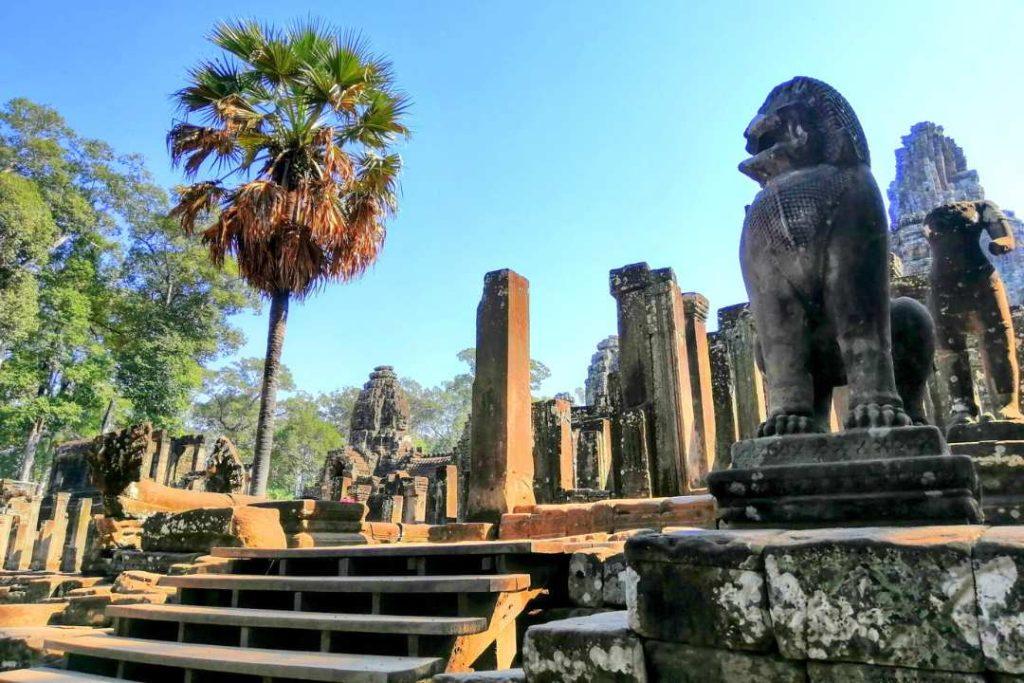
What is the significance of lions in the Khmer Empire?
Lions in the Khmer Empire were like the cool kids of the statue world. They weren’t just there to look good (though they totally did). Here’s why they were such a big deal:
- Power Symbol: Lions were the kings of the animal world, so Khmer rulers used them to show off their own power. It’s like saying, “I’m as strong as a lion!”
- Spirit Guardians: The Khmer people thought lions could scare away evil spirits. It’s like having a supernatural bouncer for your temple!
- Religious Rock Stars: Lions popped up in lots of Hindu and Buddhist stories, so using lion statues was a way to show off their faith.
- Artistic Awesomeness: Let’s face it, lions look cool. Khmer artists had a blast creating these stone cats in all sorts of styles.
How were lions depicted in ancient Khmer art and architecture?
Khmer lions weren’t your average stone cats. They had their own unique style that changed over time. Check it out:
Time PeriodLion StyleCool Features
7th Century Simple and blocky First lions at Prasat Tao
9th-10th Century More detailed, fierce-looking Guarding pyramid temples
12th-13th Century Super detailed, sometimes mixed with other animals Found at Bayon and Angkor Wat
What made Khmer lions special?
They often had:
- Curly manes that looked like fancy wigs
- Big, round eyes that seemed to watch you
- Sometimes, open mouths with teeth showing (rawr!)
- Muscular bodies that made them look super strong
What materials were used for lion statues in the Khmer Empire?
Khmer artists didn’t mess around when it came to making their lions. They used tough stuff that could stand the test of time:
- Sandstone: This was the most common material. It’s easy to carve but still pretty durable.
- Laterite: A reddish rock that’s super tough. It was often used for the lion’s body.
How did Hindu mythology influence the depiction of lions in Khmer culture?
Hindu stories played a big role in how the Khmer saw lions. Here’s the scoop:
- Narasimha: This was a half-man, half-lion form of the god Vishnu. Super powerful!
- Durga: This goddess often rode a lion. Talk about a cool ride!
- Singh: In Hindu myths, lions were seen as brave and noble. The Khmer were all about that lion energy.
What is the meaning behind the lion carvings in Angkor Thom?
At Angkor Thom, the lions tell their own stories:
- Terrace of the Elephants: Lions here show off different styles, like a lion fashion show.
- Bayon Temple: Some lions look straight ahead, others give you the side-eye as you walk in.
- Gates: Each entrance to the city has lions standing guard.
What role did lions play in the religious symbolism of the Khmer Empire?
In the Khmer Empire, lions weren’t just animals. They were like symbols walking around on four legs:
- Strength of Faith: Lions showed how strong the gods were.
- Protectors: They kept temples and sacred spaces safe.
- Wisdom: In some Buddhist stories, lions represented the Buddha’s teachings.
How are lion statues related to Khmer temple architecture?
Lions and Khmer temples go together like peanut butter and jelly. Here’s why:
- Guardians: Lions often stood at entrances, keeping watch.
- Staircase Buddies: They lined the steps leading up to temples.
- Throne Decorations: Kings’ thrones often had lion carvings to show their power.
- All-Around Awesome: Lions added a touch of majesty to the already incredible temples.
What is the historical importance of lion statues in Angkor?
These stone lions are more than just cool statues. They’re like windows into the past:
- Power Play: They show how Khmer kings wanted to be seen as strong and godlike.
- Artistic Genius: The detail in these statues proves how skilled Khmer artists were.
- Cultural Clues: Lions tell us about Khmer beliefs, religion, and what they thought was important.
- Time Capsules: These statues have survived for centuries, giving us a direct link to the ancient world.
How do lion sculptures reflect the power of the Khmer Empire?
Lion sculptures weren’t just pretty faces. They were like ancient billboards advertising Khmer power:
- Size Matters: Many lions were huge, showing off the empire’s ability to create massive art.
- Everywhere You Look: Lions were all over temples and palaces, reminding everyone of the king’s power.
- Fierce Faces: The lions often looked scary, just like the Khmer wanted their enemies to see them.
- Godly Connections: By using lions linked to gods, kings were saying, “We’re buddies with the divine!”
So, are you ready to come face to face with the Lions of the Ancient Khmer Empire?
Remember, these Lions of the Ancient Khmer Empire have been standing guard for over a thousand years. They’ve seen empires rise and fall, watched jungles grow and be cleared away, and witnessed millions of people come to admire them.
Now it’s your turn to join that long line of visitors and add your own roar to their story!
Featured
Explore more on My Siem Reap Tours
Koh Ker and Beng Mealea guided tour | Banteay Srei temple tour semi-private guided tour | Angkor Wat Sunrise shared tour | Koh Ker and Beng Mealea guided tour | Morning Siem Reap floating village tour | Afternoon Siem Reap floating village tour | Private Angkor Wat special tour | Kulen Waterfall small group guided Tour | Private Angkor Wat mix temples photo tour
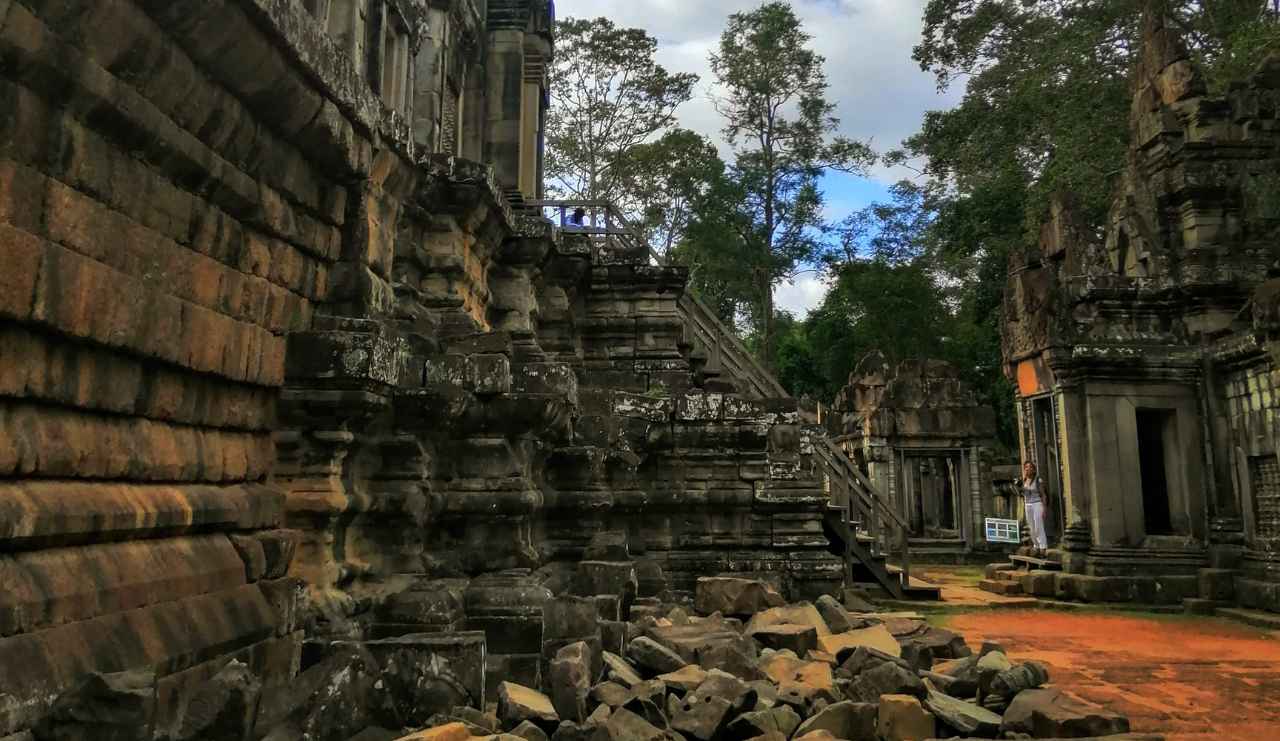
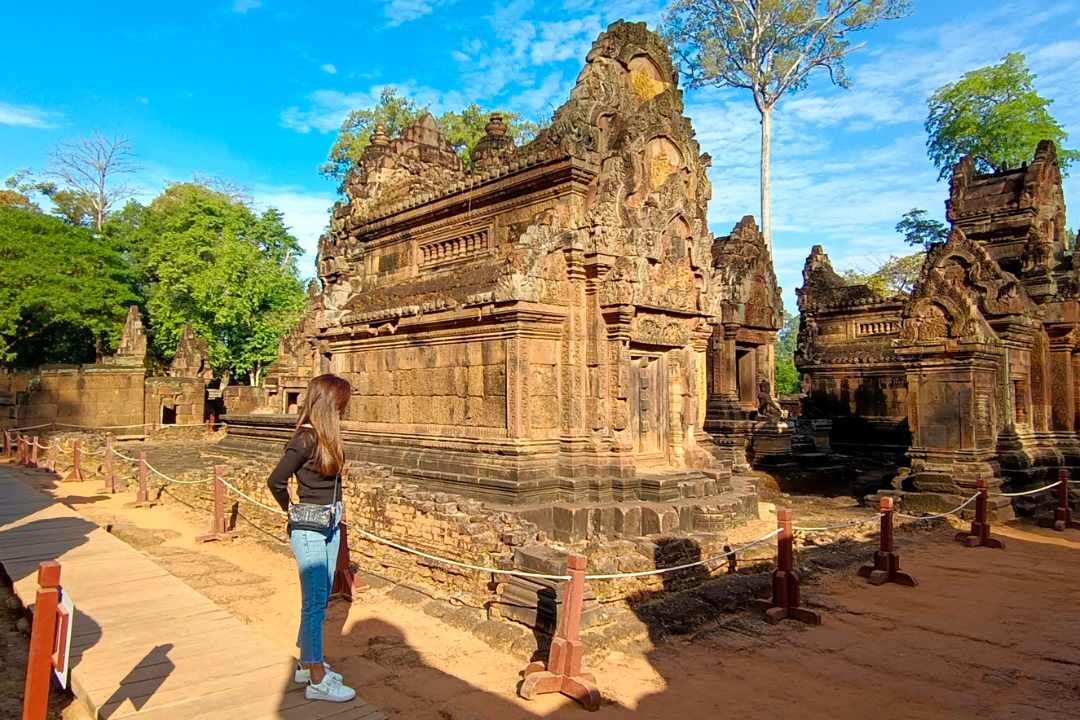

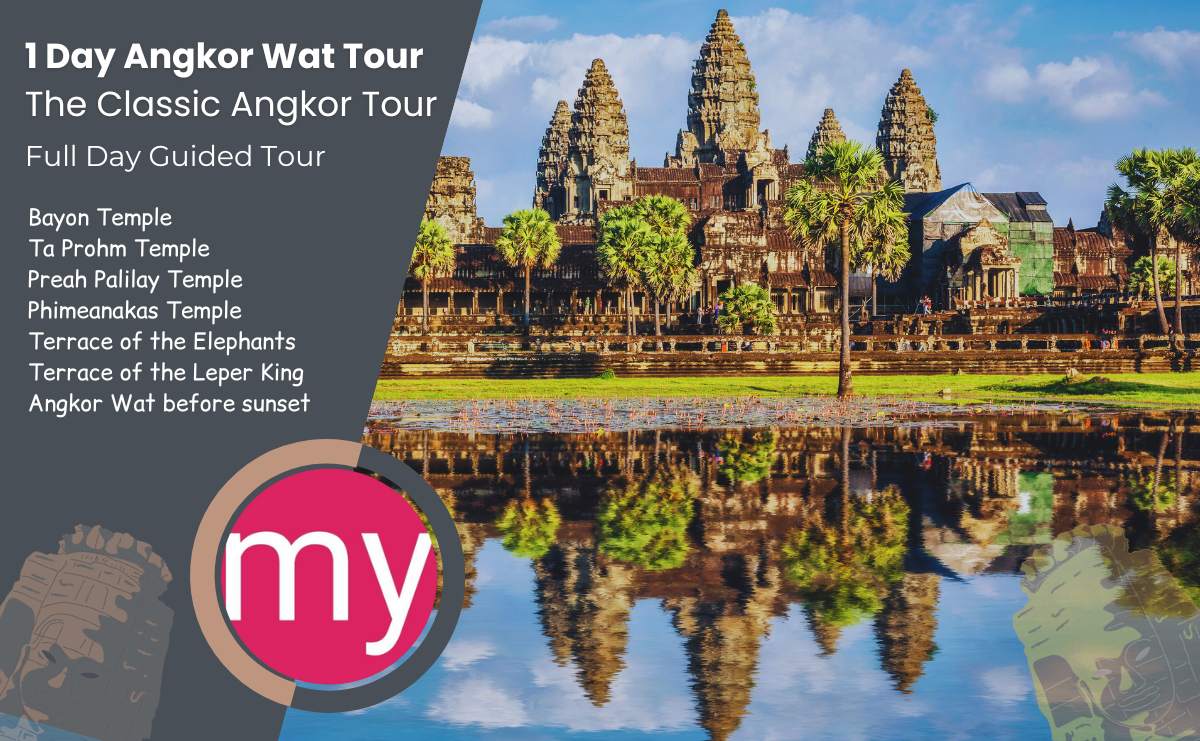

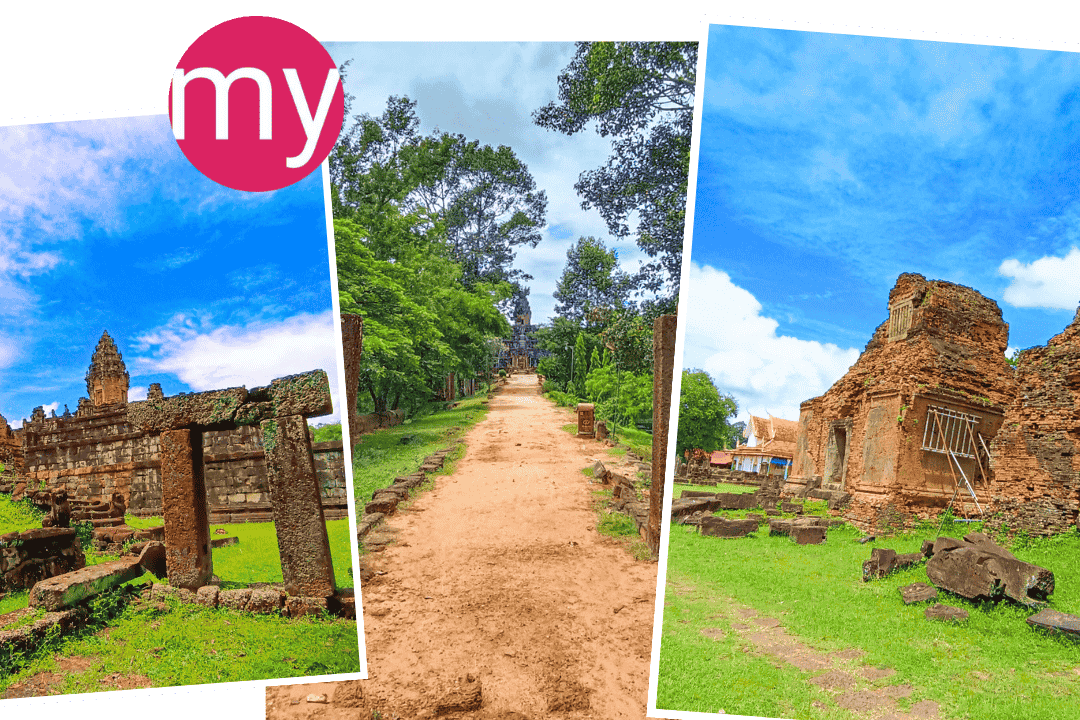
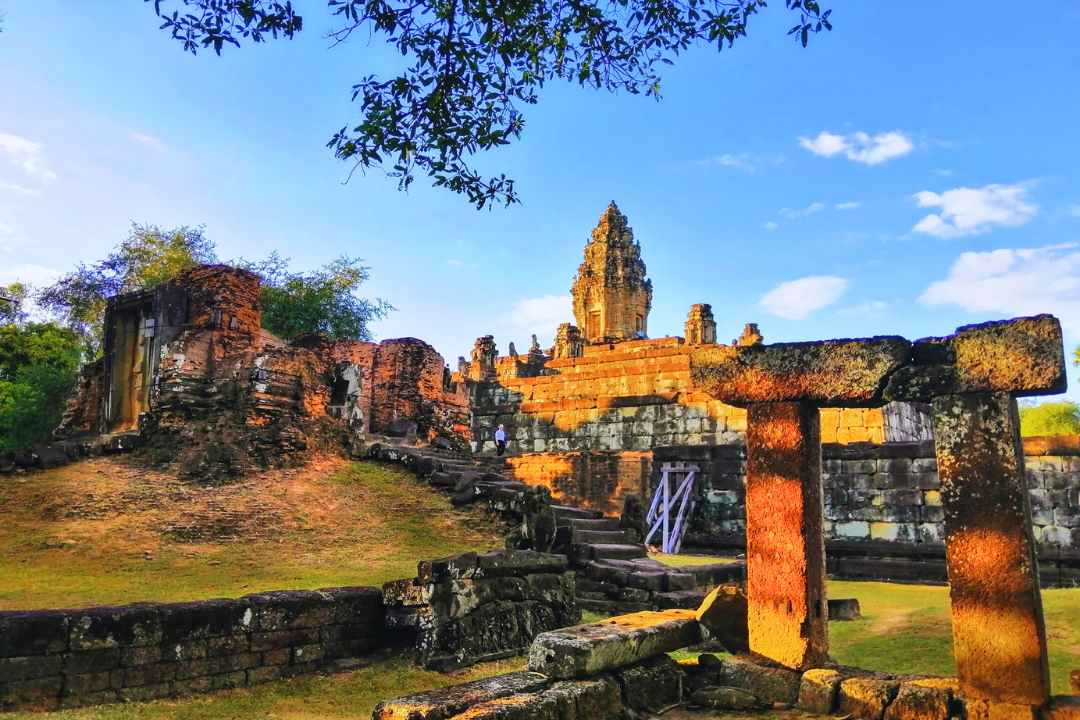
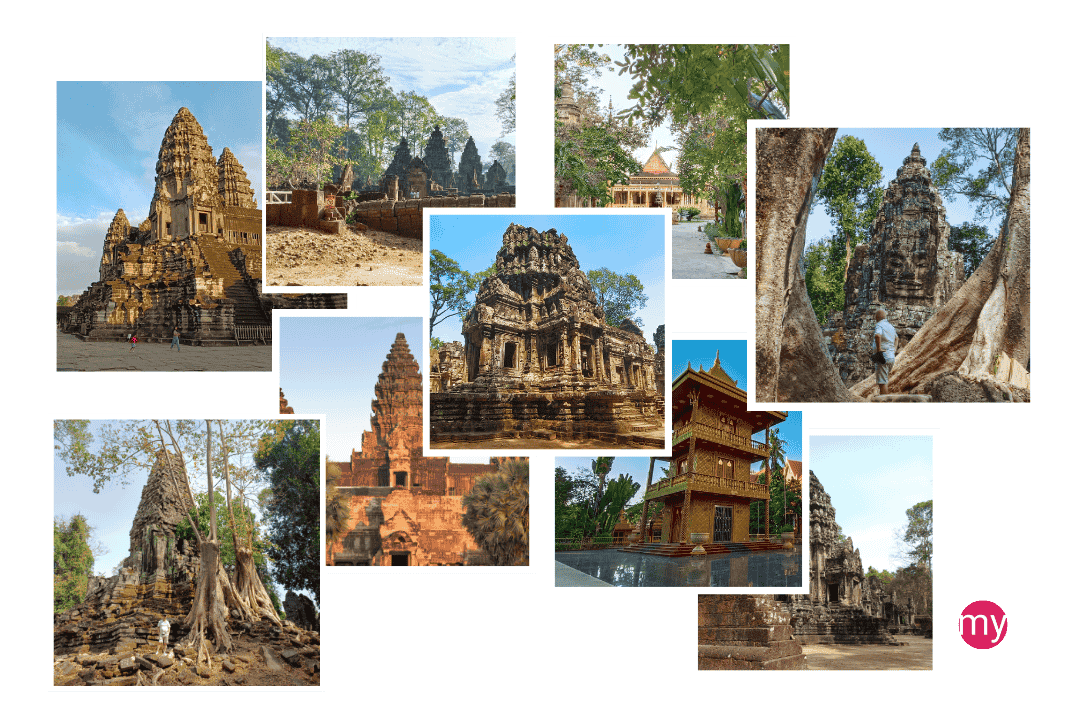
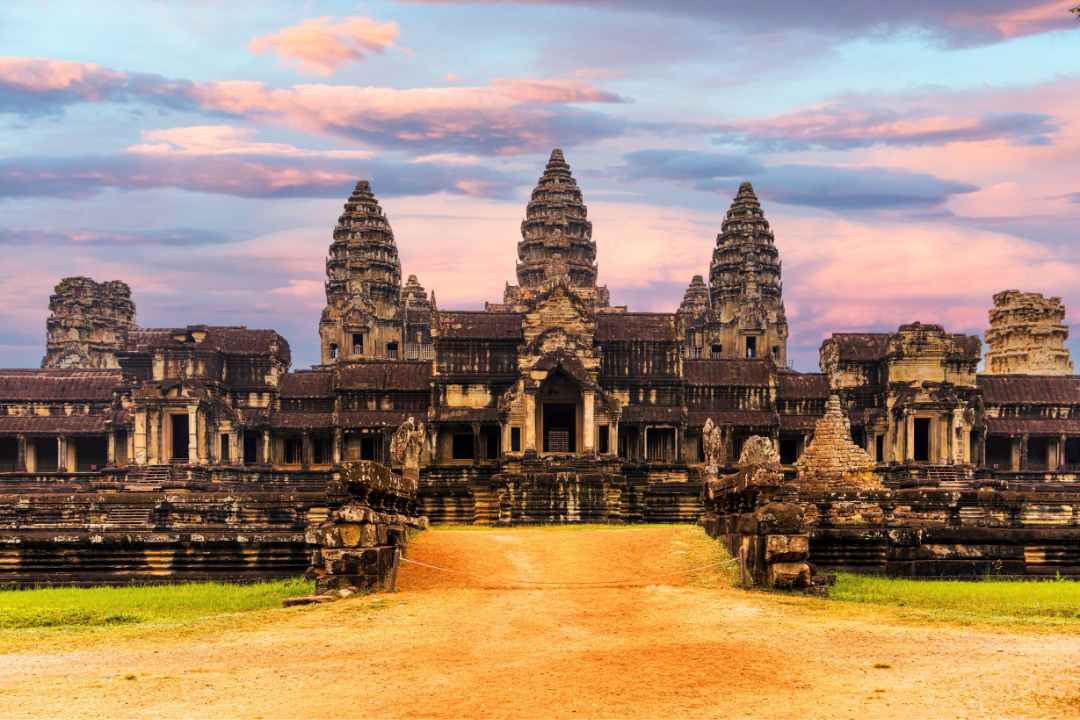
![Break one of these Angkor Temples Special Rules and your visit could end faster than you think [Plus Complete Opening Hours and Access Guide]](https://mysiemreaptours.com/wp-content/uploads/2025/09/Break-one-of-these-Angkor-Temples-Special-Rules-and-your-visit-could-end-faster-than-you-think-Plus-Complete-Opening-Hours-and-Access-Guide.png)
